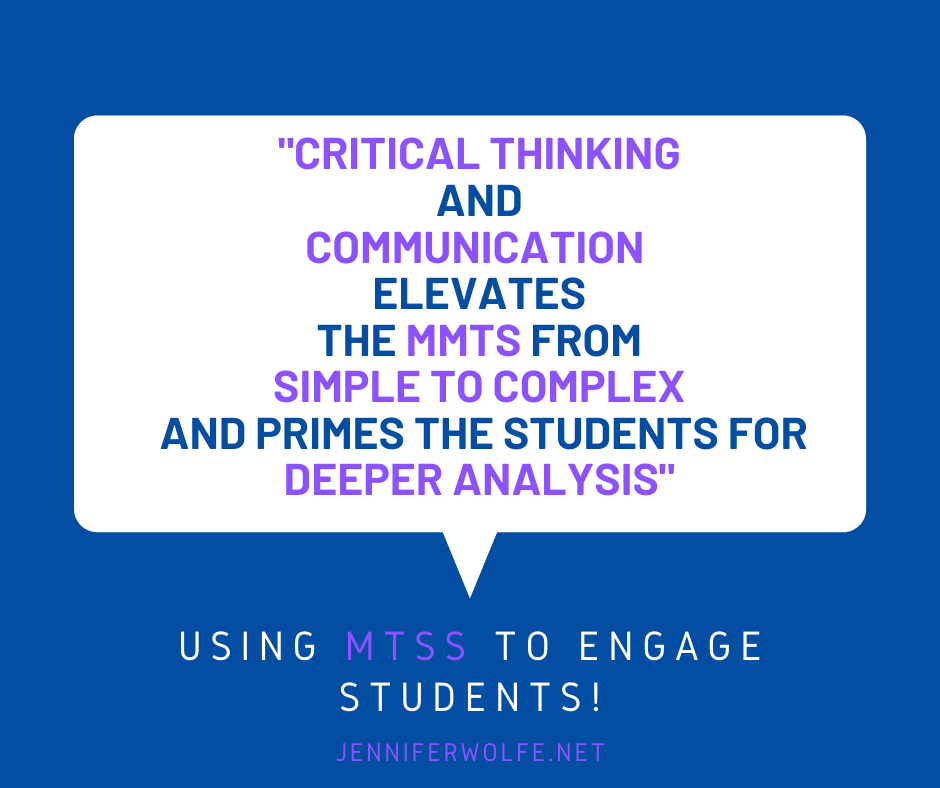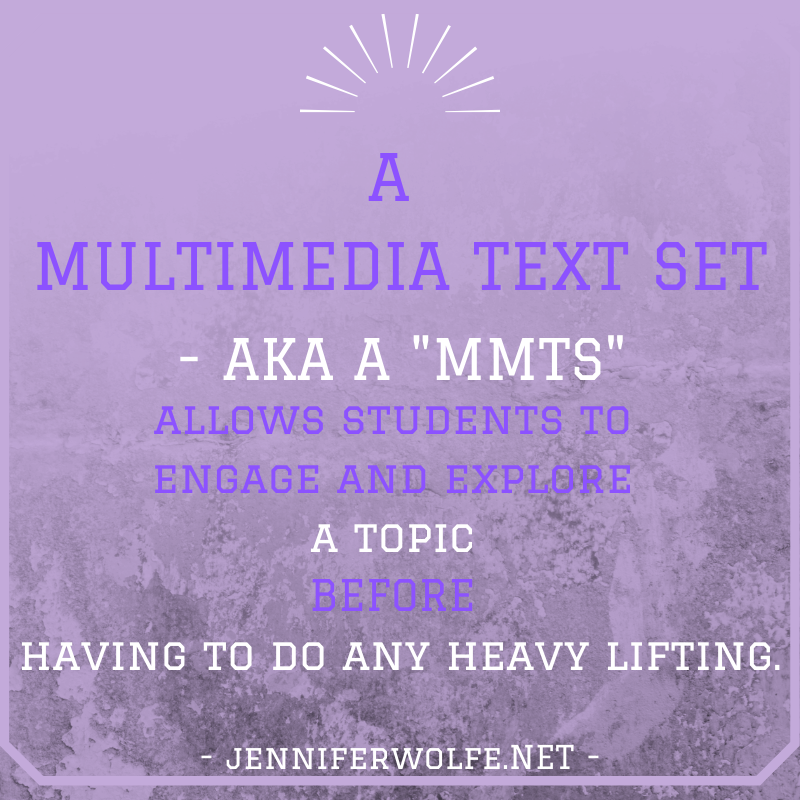Using MMTS (multimedia text sets) is a simple, but not necessarily easy, strategy to engage students in topics, explore perceptions and get kids excited to learn!
What is an MMTS?
A multimedia text set – MMTS for short – is a gameboard of sorts that allows students to engage and explore a topic BEFORE having to do any heavy lifting.

In my 7th grade English class, we’re studying “Perception and Reality”, so I created this MMTS to help my students get a jump start on the topic.
You can make your own copy of the Perception and Reality MMTS here.
How to build an MMTS
It’s pretty simple to build an MMTS – start with this template, or use any of my (or other people who share for FREE) already existing multimedia text sets.
Another great part of building and curating multimedia text sets is that you can use, reuse and remix them as much as you want to!
Once you have your template, the next step is to search for engaging videos, photo albums, articles, podcasts, music – anything that ties in with your essential question and will engage your students to think about the topic of study that’s coming up.
I love to use my textbook for this – yes, I do use a textbooks series in my classroom, but not in the traditional way. Textbook publishers are putting more and more digital resources in their series, but I find that the textbook websites aren’t very student-friendly. I like to see what the ‘experts’ suggest and riff off their ideas.
Ther are also excellent free sites like CommonLit, Newsela, and Actively Learn that offer free texts set on a variety of topics.
For video, I love curating YouTube playlists, subscribing to The Kids Should See This and TED-Ed to save ideas for using with my MMTS.
Don’t forget this key component of any MMTS

MMTS are not just docs to click around on – teachers need to build in reflection also. I use Google Forms that I embed in the center box to allow students to reflect on their learning, create their own ‘Wonder’ questions, and start making connections between the topic and their own lives. This critical thinking and communication component elevates the MMTS from simple to complex and primes the students for deeper analysis to come.
I asked these questions:
- What was the most interesting exploration, and why?
- Give an example of something in life that is not always how we perceive them to be. Tell me your thoughts about it.
- What did the explorations make you think about?
- What did you notice that the explorations had in common?
- Create one ‘wonder’ question about perception and reality that you’d like to explore in this unit.
- Is there anything else you’d like to tell me about this MMTS and/or perception and reality?
I got these answers:
- They made me think that everyone is different, and when they look at a certain thing, every one may see it differently. It also made me think a little about hypnotize. And how that can sometimes be similar.
- The way I perceive people, the ladder my mind goes through. The explorations made me realize that everyone perceives the world differently, and when we work together we can create cool new ideas.
- It made me think about different things we could do to improve our world, like the robot thing I mentioned earlier and the augmented reality app on your phone.
- I wonder how often our reality gets clouded with perception.
- Even though there might be a lot of people in the world that have done bad stuff and that are unique races that you could assume are bad people don’t assume don’t judge and ask your self the question of what the reality is?
- One wonder question that I have about perception and reality is what else can make me think about what I am reading, watching, and listening to?
- Can people make you think differently by what they make you see?
MMTS and your students

When I am ready to roll out a new unit or project, I start with an MMTS.
I often ask students to complete a certain number of ‘explorations’ just to make sure they don’t rush through it. Another tip is to keep the form locked until you’ve given them adequate time to explore. I usually use an MMTS for about 60 minutes of exploration, depending on the depth of the topic and the length of the links I’ve added. The idea is to get them excited, not saturated! Plus, they can always go back to the links at any time in the unit for further investigations.
I love the time in class when students are exploring. They love sharing their ‘aha’ moments or encouraging a classmate to check out what they are viewing/reading/listening to.
Ready to try one?
There’s a huge community of educators creating not only multimedia text sets but also HyperDocs and other digital lessons – and we share them for FREE!
If you’re looking for inspiration or something to remix for your students, visit http://hyperdocs.co. Also, follow @TsgiveTs on Twitter, join the HyperDocs group on Facebook, or comment below what you’re looking for and I’d be happy to help you out!
And if you create an MMTS, it would be awesome if you could share it with me so I can continue to spread the FREE digital lesson love – share it with mamawolfeto2@gmail.com!
One comment
3-2-1 Thinking Routines: Deepen Your Students' Learning - mamawolfe
February 2, 2020[…] started our latest unit of study with a MMTS ( I shared a post about that here). Next, we followed up with a more directed 3-2-1 thinking routine focusing on our next mini-unit […]